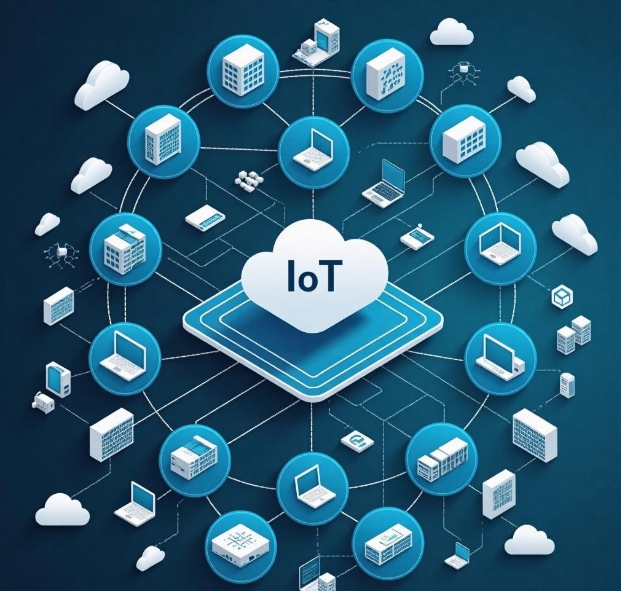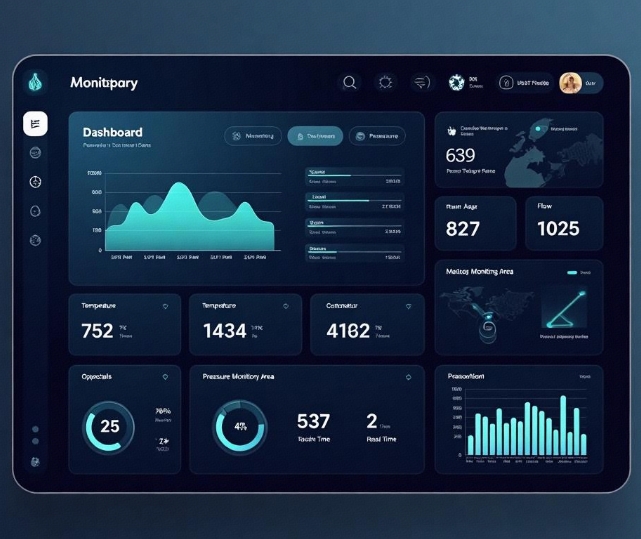Device Management and Remote Monitoring in IoT Development
- latest articles
- 1.DApp Development & Customization: Merging Diverse Market Needs with User Experience 2.Analysis of the Core Technical System in DApp Project Development 3.How to achieve cross-chain interoperability in Web3 projects? 4.How does the tokenization of points reconstruct the e-commerce ecosystem? 5.How to Set and Track Data Metrics for a Points Mall? 6.What is DApp Development? Core Concepts and Technical Analysis 7.Inventory of commonly used Web3 development tools and usage tips 8.Development of a Distribution System Integrated with Social E-commerce 9.Six Key Steps for Businesses to Build a Points Mall System 10.What is DApp Development? A Comprehensive Guide from Concept to Implementation
- Popular Articles
- 1.Future Trends and Technology Predictions for APP Development in 2025 2.Analysis of the DeFi Ecosystem: How Developers Can Participate in Decentralized Finance Innovation 3.From Zero to One: How PI Mall Revolutionizes the Traditional E-commerce Model 4.DAPP Development | Best Practices for Professional Customization and Rapid Launch 5.How to Develop a Successful Douyin Mini Program: Technical Architecture and Best Practices 6.Recommended by the Web3 developer community: the most noteworthy forums and resources 7.From Cloud Computing to Computing Power Leasing: Building a Flexible and Scalable Computing Resource Platform 8.Shared Bike System APP: The Convenient Choice in the Era of Smart Travel 9.How to Create a Successful Dating App: From Needs Analysis to User Experience Design 10.From Design to Development: The Complete Process of Bringing an APP Idea to Life
With the continuous advancement and widespread application of Internet of Things (IoT) technology, an increasing number of devices are being connected to the internet. These devices span various fields, from household appliances to industrial machinery, and from environmental monitoring equipment to smart medical devices. One of the core values of the IoT is to enhance device utilization efficiency, reduce failures, and lower maintenance costs through intelligent device connectivity and data sharing. In the development of IoT systems, device management and remote monitoring are undoubtedly crucial components.
Device management and remote monitoring not only improve operational efficiency but also help users grasp the operational status and health of devices in real-time, providing data support for failure prevention, energy optimization, and intelligent decision-making. This article will delve into device management and remote monitoring in IoT development, analyzing their key technologies, implementation methods, application scenarios, and development trends.
1. Core Concepts and Challenges of Device Management
1.1 Definition of Device Management
Device management typically refers to the effective management of the entire lifecycle of all devices in the IoT. This includes device registration, configuration, monitoring, maintenance, updates, and more. Device management involves not only the hardware but also the software, data, and collaboration with other devices. The goal of device management is to ensure normal operation, improve reliability, extend device lifespan, reduce maintenance costs, and provide data support for subsequent optimization.
In the IoT environment, device management faces the following core challenges:
Diverse Device Types: The IoT involves a wide variety of devices from different manufacturers and with different technical standards, making unified management a challenge.
Large Number of Devices: With the surge in IoT devices, effectively managing thousands of devices, especially in large-scale deployment scenarios, increases complexity exponentially.
Dynamic Changes in Devices: Devices require regular maintenance and updates and may change due to technological advancements or failures. Timely monitoring, adjustment, and maintenance are critical issues in device management.
1.2 Key Functions of Device Management
In IoT development, key functions of device management include but are not limited to the following:
Device Registration and Authentication: Every device must be registered before connecting to the network, ensuring secure identity authentication to prevent unauthorized access.
Device Monitoring and Diagnostics: Real-time monitoring of device operational status, collecting operational data, and diagnosing device health. This forms the basis for remote maintenance, troubleshooting, and predictive maintenance.
Device Configuration and Control: The device management platform must provide configuration and remote control capabilities, allowing users to adjust device operational parameters as needed.
Device Firmware and Software Updates: Firmware and software need regular updates to adapt to new technological requirements or fix known security vulnerabilities.
Data Analysis and Optimization: By collecting and analyzing operational data, optimize device performance, extend lifespan, and support subsequent decision-making.
2. Applications of Remote Monitoring in the IoT
2.1 Definition and Advantages of Remote Monitoring
Remote Monitoring refers to the technology of monitoring IoT devices in real-time via the internet. Unlike traditional on-site monitoring, remote monitoring eliminates the need for users to be physically present at the device location, allowing real-time viewing of device status, troubleshooting, and even remote control from anywhere.
The advantages of remote monitoring are mainly reflected in the following aspects:
Improved Efficiency: Remote monitoring enables managers to detect device failures immediately, avoiding prolonged delays before damage occurs. This is particularly important for devices requiring 24/7 operation.
Reduced Labor Costs: Traditional device maintenance relies heavily on manual inspections, whereas remote monitoring significantly cuts labor costs, especially for widely distributed or complex environments.
Failure Prevention and Maintenance Optimization: Combined with data analysis, remote monitoring can predict device failures, allowing preemptive repairs or part replacements, thereby reducing downtime and improving productivity.
Resource Conservation: Remote monitoring helps optimize device operation modes, reduce energy consumption, and conserve resources. For example, in smart grids, it can adjust power distribution based on real-time data to optimize electricity usage.
2.2 Technical Architecture of Remote Monitoring
The technical architecture of a remote monitoring system typically consists of three main components:
Data Acquisition Layer: Devices collect various operational data via sensors, embedded systems, etc., and transmit it to the central system. This layer typically includes hardware interfaces and communication protocols.
Data Transmission Layer: This layer is responsible for transmitting collected data to the cloud platform or local server. Common communication protocols include Wi-Fi, Zigbee, LoRa, NB-IoT, etc.
Data Processing and Display Layer: This is the core of the remote monitoring system, responsible for receiving, storing, analyzing, and processing device data. Users can view device status via web interfaces, mobile apps, etc., and perform control operations.
2.3 Practical Applications of Remote Monitoring
Remote monitoring is widely used in many industries:
Smart Homes: Users can remotely control home devices like air conditioners, lights, and door locks via mobile apps, adjusting device status anytime.
Industrial Automation: In manufacturing and industrial production, managers can monitor production equipment status in real-time, identify potential failures, and perform timely maintenance to reduce downtime.
Healthcare: In smart healthcare, remote monitoring enables doctors to monitor patients' health in real-time, adjust treatment plans promptly, and even perform remote diagnosis and treatment.
Smart Cities: Remote monitoring allows real-time monitoring of public facilities like streetlights, traffic lights, and environmental monitoring instruments, addressing urban operational issues promptly.
3. Technological Development Trends in IoT Device Management and Remote Monitoring
3.1 Cloud Computing and Big Data Analytics
With advancements in cloud computing and big data technologies, the capabilities of device management and remote monitoring will be significantly enhanced. Cloud platforms provide robust computing and storage capacities to process and analyze massive device data. Through big data analytics, managers can more accurately predict device failures, optimize operations, and even automate device scheduling.
3.2 Edge Computing
Edge computing involves moving data processing from the cloud to the device's proximity, reducing computational load on the cloud and minimizing data transmission delays. In device management and remote monitoring, edge computing enables faster responses and more efficient data processing, especially in scenarios requiring real-time feedback, such as autonomous driving and industrial automation.
3.3 Artificial Intelligence and Machine Learning
The integration of AI and machine learning will make IoT device management and remote monitoring more intelligent. Through deep learning of operational data, systems can automatically identify abnormal device states and even predict failures based on historical data. Additionally, AI can continuously learn to optimize device operation modes, achieving more efficient resource utilization and maintenance scheduling.
3.4 Security and Privacy Protection
As IoT devices become more prevalent, security and privacy protection are increasingly critical. Ensuring the security of device data and protecting user privacy are key directions in technological development. Strengthening device authentication, data encryption, and network security measures are essential for the safe operation of IoT systems.
Conclusion
The rapid development of IoT technology has made device management and remote monitoring vital tools for improving efficiency, reducing costs, and enhancing service quality. Through device management, enterprises can better manage device lifecycles and lower maintenance costs; through remote monitoring, users can grasp device status in real-time, prevent failures proactively, and optimize resource usage. In the future, with the integration of cloud computing, big data, AI, and other technologies, device management and remote monitoring will become more intelligent and automated, providing robust support across various industries.
-

How to Use IoT Development to Enhance Supply Chain Efficiency
With the rapid development of the global economy and the deepening of digital tr···
-

Development and Innovation of the Internet of Things in the Healthcare Sector
With the rapid advancement of information technology, the Internet of Things (Io···
-

Data Storage and Analysis Methods in IoT Development
The Internet of Things (IoT) is one of the most revolutionary innovations in tod···

 Blockchain
Blockchain












